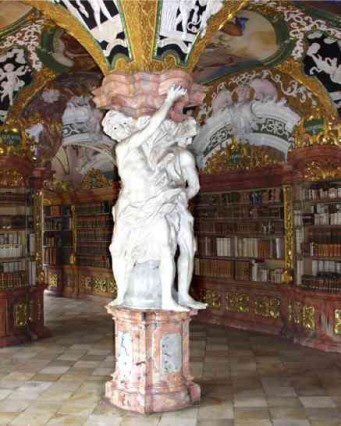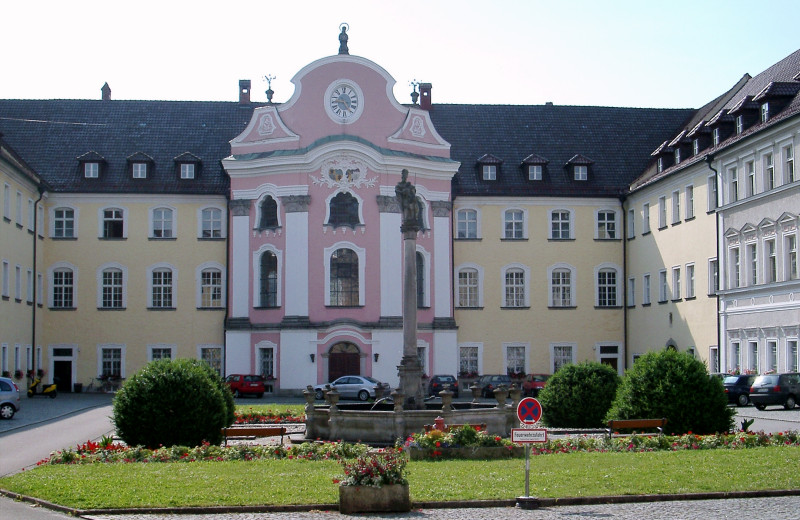Benedictine abbey St. Michael in Metten
A few kilometres before Deggendorf, soon after passing under the A3 motorway, a cycle path leads to Metten. The approx. 1 km long detour to the north pays off.
In Metten, after Weltenburg, we encounter another original Bavarian monastery. Its foundation goes back to the 8th century. The monastery was probably settled by the Reichenau. In
792 Charles the Great granted it royal protection and immunity. The task of the monastery was the clearing and colonization in the Bavarian Forest and the Ostmark. Due to the
Hungarian invasions and the secularisation of Duke Arnulf in the 10th century the monastery ceased to exist and was replaced by a secular canonical monastery.
In 962 Metten came to the Babenbergs, who turned the monastery into a canon monastery. The second founder of the monastery Metten is considered to be the Babenberg duke Jasomirgott. In 1157 he called Benedictine monks to Metten to renew the monastic life.
In 1236 the entire complex was destroyed by fire. The rebuilt church was consecrated in 1264. After the death of the last Babenberger (1246), the monastery was placed under the protection of the Wittelsbach dynasty, who ruled the duchy of Bavaria at that time. The village of Metten now became a Hofmark, where the abbot of the monastery exercised the lower jurisdiction.
After the crisis period of the 30-year war Metten was redesigned in baroque style (church, library, festival hall), especially by Abbot Roman Märkl (1706-29). Today the library presents itself in all its baroque splendor.


The baroque church is particularly characterized by the sculptural stucco decorations and the unusual ceiling frescoes of the main room and the presbytery fresco, which fills most of the ceiling. The high age is the work of the Straubinger Jakob Schöpf, the age picture was painted by Cosmas Damian Asam. On 16 July 1720 Abbot Roman laid the foundation stone for the reconstruction of the nave. The stucco work was done by Franz Josef Holzinger.

With the secularization in 1803 the monastery was abolished.
In 1830 King Ludwig I rebuilt Metten as the first Benedictine abbey in Bavaria and entrusted the monastery with pastoral care, education and science. At the request of King Ludwig I, the monks of Metten opened a Latin school, which developed into a grammar school and the great task of the monastery, and which is known today beyond the German-speaking world.


Donube cycle route
